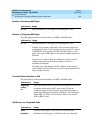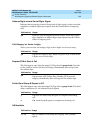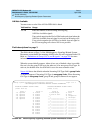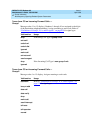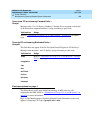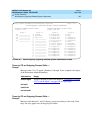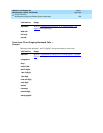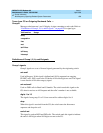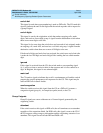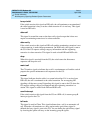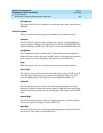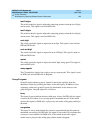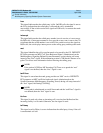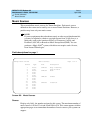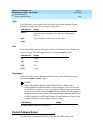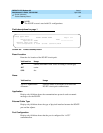
DEFINITY ECS Release 8.2
Administrator’s Guide
555-233-506
Issue 1
April 2000
Screen reference
840Multifrequency-Signaling-Related System Parameters
17
end-of-dial
This signal is used when open numbering is used on DID calls. The CO sends this
signal to indicate the end-of-dial digits and the switch responds with a request for
a group II signal.
end-of-digits
This signal is sent by the origination switch that makes outgoing calls, sends
digits, and receives a next-digit group A signal from the destination switch when
there are no more digits to be sent.
This signal is also sent when the switch does not have end-of-ani assigned, makes
an outgoing call, sends ANI, and receives a call-info-ani group A signal from the
destination switch when there are no more ANI digits to be sent.
If both end-of-digits and end-of-ani are assigned, the switch uses end-of-ani after
it sends the last ANI digit and end-of-digits after sending the last called-number
digit.
ignored
If this signal is received from the CO, the switch sends a corresponding signal
(A.1, and so on) but no action is taken in the response and it is not counted as a
digit. In Belgium, this signal is not acknowledged.
maint-call
The CO sends a signal to indicate that a call is a maintenance call and the switch
prepares the special maintenance call sequences for the CO. This signal may be
used on DID calls in Saudi Arabia.
send-congestion
When the switch receives this signal from the CO on a DID call, it returns a
congestion signal (group A), in compel (not pulse) mode, to the CO.
Group II signals
Group II signals are a more elaborate set of forward signals generated by the
originating switch.
attendant
If the switch receives this signal on DID calls, the call terminates at an attendant
regardless of the extension dialed. On DOD calls, this signal is sent to the CO if
the CO requests calling-category information and the originating extension is an
attendant. This signal is used on both DID and DOD calls.



